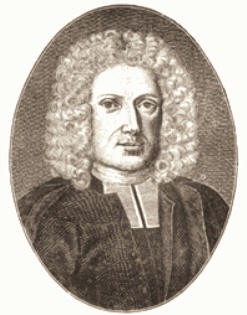Rudolf Jakob Camerarius facts for kids
Quick facts for kids
Rudolf Jakob Camerarius
|
|
|---|---|
 |
|
| Born | 12 February 1665 |
| Died | 11 September 1721 (aged 56) Tübingen, Holy Roman Empire
|
| Other names | Camerer |
| Known for | Investigations on the reproductive organs of plants (De sexu plantarum epistola) |
| Parent(s) |
|
| Scientific career | |
| Fields | Botanist and physician |
| Doctoral advisor | Elias Rudolph Camerarius Sr. Georg Balthasar Metzger |
| Doctoral students | Johann Andreas Planer |
Rudolf Jakob Camerarius (born February 12, 1665 – died September 11, 1721) was a German botanist and physician. He is famous for his important discoveries about how plants reproduce. His work helped us understand that plants have male and female parts, just like animals.
Contents
Early Life and Career
Rudolf Jakob Camerarius was born in a city called Tübingen in what was then the Holy Roman Empire. He grew up to be a very smart person.
In 1687, when he was 22 years old, he became a professor of medicine. He also became the director of the botanical gardens in Tübingen. This meant he was in charge of a special garden where many different plants were grown and studied.
Discovering Plant Reproduction
Camerarius is best known for his research into how plants create new plants. Before him, some scientists like John Ray and Nehemiah Grew thought that pollen might be important for plant reproduction. However, it was Camerarius who did real experiments to prove it.
Experiments with Plants
Camerarius studied several types of plants very carefully. He wanted to see what happened if male and female plant parts couldn't interact.
- He looked at mulberry plants. He found that female mulberry plants that were far away from male plants still grew fruit. But these fruits had no seeds inside them. This showed that something from the male plant was needed for seeds to form.
- He also studied plants like Mercurialis and spinach. He saw similar results: without male parts nearby, these plants didn't produce proper seeds.
- His experiments with the castor oil plant (Ricinus) and maize (corn) were very clear. For these plants, he carefully cut off the male flowers. On maize, these male flowers are called "tassels." When he removed the male parts, no seeds grew on the plants.
Sharing His Findings
Camerarius wrote down all his findings in a letter. This letter was called De sexu plantarum epistola, which means "On the Sex of Plants." It was published in 1694. His discoveries were very important and got a lot of attention from other scientists right away.
His work showed that plants have different sexes, or at least different parts that act like male and female. This was a big step in understanding the life cycle of plants. Later scientists used his work to learn even more about how plants reproduce.
See also
 In Spanish: Rudolf Jakob Camerarius para niños
In Spanish: Rudolf Jakob Camerarius para niños


